Finding the right influencers for your campaigns can be challenging as it is – narrowing down your selection to influencers who suit your target audience and goals, as well as securing responses in the first place, is something that requires time and the right set of skills or tools to get the job done. This only becomes more complicated as you begin running campaigns on a large scale, as it involves securing potentially hundreds of influencers to create numerous posts to get your dream influencer marketing campaign off the ground. So, just how do you navigate this tricky and time-consuming endeavor? In this article, we’ll be outlining the concept of mass influencer recruitment and discuss the right tools for the job to help you scale your campaigns and find the right approach to fit your strategy.
What is mass influencer recruitment?
While somewhat of a broad term, mass influencer recruitment is exactly what it sounds like – the act of reaching out to and attempting to secure partnerships with hundreds or even thousands of influencers for the purpose of running a campaign or brand activation for your business. These kinds of campaigns are commonly seen among brands looking to rapidly promote a new product offering in their lineup, and can also be witnessed when new brands want to make a splash in the industry when they launch and push for heightened brand awareness of their product or service.
This type of marketing approach is frequently utilized for gifting or seeding campaigns, and is often used for general products aimed at consumers, such as makeup or beauty for example, and will be seen less often in higher-end or luxury brands where influencer activations may be rarer or more exclusive. Brands who use the mass influencer recruitment approach want to create an abundance of ads and posts around their product to boost it as much as possible, creating a firm footprint and buzz around their product on social media and increasing the number of eyes on their brand and product across numerous social media platforms. As such, they need to employ specific tactics to secure the right kind of influencers at the right scale to achieve their goals.
Crunching the numbers: what the “funnel” looks like
As much as getting right to it and finding the right influencers for the job is an important step, it’s crucial to understand the numbers beforehand so you know exactly how many creators you’ll want for the job before you begin.
First off, the average conversion into posts when using the approach of product gifting is 30-50%. This means that if, for example, you gifted a particular product to a group of 100 influencers, you could expect to get around 30-50 posts from this investment. Therefore, if you have an overall goal of getting 100 posts for your campaign, you would need to activate at least 335 influencers.
That being said, activating an influence is easier said than done; many of the influencers you contact and reach out to may not respond to your offer nor follow through with ordering your product or providing shipping details to receive your gifted product, so this will need to be accounted for when assessing how many influencers to create initial contact with. As a general idea, if you wanted 100 posts, and therefore needed activation of 335 influencers, you would need to have reached out to 1000-1500 influencers in total to reliably hit your target – no small feat by any means.
In other words, it’s time to get to work on finding and recruiting influencers for a campaign of this scale – let’s take a look at some of the tools and platforms available to you that can help get the job done.
Tools to aid your influencer recruitment process
In the modern digital age, we’re lucky to have various tailored products available to help find appropriate influencers to work with across a variety of niches. Sure, you could work manually by using in-built features on platforms like Instagram and TikTok, but that kind of manual work soon becomes impossible to even consider when scaling your campaigns to involve hundreds or thousands of creators.
Over the past few years, as influencer marketing has shown itself to be a highly viable, highly lucrative option for brands of all sizes to incorporate into their marketing strategies, numerous tools have been developed to assist in the various phases of the influencer marketing campaign planning and execution process. We’ll dive into each of these tools below, highlighting a handful of major influencer marketing platforms that offer their own version thereof. It should be noted, however, that while many of these companies may offer tools from other categories mentioned, we may not explicitly mention them repeatedly across each category; this is not an exhaustive list by any means.
Without further ado, let’s take a look at some of the tools you should consider for your mass recruitment endeavors.
Influencer Discovery
The first step to finding enough influencers to work with is… finding influencers in the first place. Influencer Search and Discovery tools were designed to help brands and agencies find the influencers they need amongst a pool of millions of accounts, often with the aid of refined filters and search criteria to help them whittle down the lists to only those that will suit them. The primary differences between the various platforms offering this solution are the size of the database of influencer accounts they offer, the number of filters and their properties, and potentially the region in which their database is focused, as some platforms are better suited to certain regions than others.
HypeAuditor offers an advanced influencer discovery platform with a plethora of filtering and search options to assist in finding the perfect fit, boasting over 30 filters across a range of criteria as well as keyword searching to help narrow things down even further. Their special offering lies in their fraud detection capabilities, as they assist in reducing doubt in the influencers you choose to work with – their propriety Audience Quality Score helps in determining how many fake or inauthentic followers an influencer may have, allowing you to quickly remove them from consideration and clearing room to work only with trustworthy creators.
Mavrck is a popular platform for influencer discovery thanks to its emphasis on specific criteria to find worthwhile influencers, including fraud detection. Their influencer search tool uncovers information regarding audience demographics such as interests, ethnicity, age, gender, and more to further aid in finding suitable influencers for campaigns. Additionally, the tool supports influencers from a range of social media platforms to give a range of possibilities for collaborations: Instagram, Facebook, YouTube, TikTok, Twitch, Pinterest, Twitter, and third-party blogs.
Another prominent option is Klear, the influencer marketing platform with a high emphasis on AI-aided influencer searches. Klear makes it known that the power of AI is what drives your success in finding the right influencers for you, as they offer just 12 filter options but promise you’ll find what you’re looking for. In particular, Klear emphasizes the ability to find micro-influencers and creators in specific niches, which can be useful for highly specific brands or small businesses looking for more modest creators with highly engaged audiences. Klear also offers their proprietary metric, the Klear score, which is an AI-calculated figure to help you determine a creator’s level of influence at a single glance, making it easier for you to find nano, micro, macro, or mega influencers depending on your preference.
Social Listening
A very valuable asset for brands in the influencer marketing space, social listening tools allow businesses to gather insight into the general impression of their brand online, letting them keep an eye on what people are saying about either them or their industry in real time. These tools monitor social media platforms to specifically highlight mentions of their brand name or others in their field, keywords, phrases, and hashtags that may be of interest to determine overall sentiment and assist with identifying potential customers, trends among competitors, and more. This is a useful asset to businesses in discovering which social media users are actively talking about your brand, allowing you to identify potential amongst these users for future influencer marketing activities, either as creators or target audiences.
Sprout Social is a major player in this field, offering enterprise-ready social listening tools that hone in on only the important conversations on social media to deliver brand insights that can directly inform their strategy. Their Share of Voice metric is particularly great for determining how much of the conversation within a particular field or niche is focused on a brand, allowing them to see what their apparent ‘market share’ is when it comes to user conversation and discussion. Sentiment analysis helps to add further context to these conversations, allowing brands to make informed decisions on what to do next based on how audiences are perceiving them.
Another platform that is focused on providing social listening data to brands is Brand24, whose technology aids businesses in tracking every mention of their brand by monitoring over 25 million active news sources in varying formats across the net. What’s more, Brand24 will automatically generate a report based on its findings to help you assess your current PR coverage.
Influential Customer Search
Finding and working with influential customers is a method that all but ensures an authentic solution to your influencer marketing needs, as influential customers are those customers who already promote a particular brand among their network of friends or followers of their own volition as fans of the brand and its offerings. These influential customers are particularly great to work with when you need to ensure influencer activations and commitment from creators for your campaigns, as they exhibit an existing dedication to your brand.
In fact, Upfluence, a major influencer marketing platform, has found that influential customers are up to 7 times more likely to accept a collaboration request from a brand than influencers from outside the brand’s fanbase. Upfluence uses powerful data to help you discover existing customers from its database, making it easier for your brand to partner up with creators who want to work with you, while also providing you with metrics and performance data to give you peace of mind that these creators are worth it in terms of your ROI.
Lookalike Search
Once you’ve garnered a handful of creators or influencers you’d already love to work with, it might be time to try searching for others who closely align with those in your roster. This is where lookalike tools come in handy, as they can aid you in matching up with potentially lesser-known influencers that otherwise meet the criteria for your campaign.
Grin, a major influencer marketing platform, offers a web extension to help you do just that; not only does it match up creators with similar engagement rates, followings, and fields of interest, but of posting frequency, style, and other traits that can make a big difference in results. Their tool aims to help you grow strategically and to keep your influencer selection true to what already works for you – and the best part is, that this web extension is also free.
Modash offers a similar feature with a simpler approach of displaying those influencers who match up to your chosen creators in terms of their talking points and audience demographics, but add an additional layer by allowing you to layer filters onto your results to refine your selection based on criteria such as region or other important factors.
Landing Page Recruitment
Brand ambassador and affiliate programs remain a popular method of getting influencers on board to promote your brand, ranging from a handful of celebrity endorsements to thousands of smaller creators eager for the opportunity to work with their favorites. One needs to just take a look at the success of Lululemon or the #SheinGal programs to see the positive effect these programs can have on a brand and its marketing in getting lots of people involved. Depending on the approach you want to take, affiliate programs can be structured in an exclusive manner with lots of criteria or a limit to entry, or they can allow for plenty more creators to sign up with the use of a landing page or application form that onboards them into the program.
Solutions such as CreatorIQ are a great option for this sort of approach, allowing you to generate a dedicated landing page for your brand that is accessible to users, allowing them to fill out their details which can then be added to a greater database or CRM – these individuals can eventually be approved to work as ambassadors for your brand. Even better, CreatorIQ allows for full flexibility to customize this landing page to directly suit your brand and its image, helping keep things uniform and true to your vision despite using an external source to create this landing page for you.
Outreach
Successful outreach efforts are paramount to securing the sheer number of influencers you need for large campaigns. While the previous solutions described tools to help you find quality influencers in the first place, you need to know how to talk to and approach them to ensure they’re on board for the ride. Outreach tools in general involve messaging creators to propose collaboration and can offer greater scale thanks to the features on offer.
HypeAuditor for example allows you to directly import your influencer selection list to automatically have access to their contact details, and thereafter, gives you bulk emailing capabilities to reach out to thousands of creators all at once. To help you stand out in their inbox, they also give you personalization options to keep things tailored to the creators you’re speaking to. Better still, HypeAuditor has a library of outreach templates designed to suit a range of proposal scenarios and collaborations, further taking the manual work out of the process and helping you get influencers on board in less time.
Conclusion
Influencer recruitment is a process that takes time, but it doesn’t have to take up more of your time and effort than necessary. Taking up the help of AI-driven, powerful automation tools can help bolster your mass influencer recruitment process to get your major campaigns off the ground faster and get you the reach and awareness you’re looking for. Simply take the time to familiarize yourself with the range of tools out there to determine which of them suits your brand and its goals best and you’ll be running large-scale influencer activations in no time.














